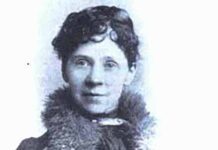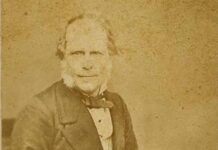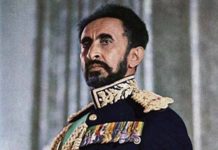He was born in 1635 in County Monmouth, Wales. His father, Robert, was a well-to-do farmer. Sometime in 1654, 19 year-old Henry Morgan traveled to Bristol, England’s second busiest seaport, where he signed on as an indentured servant on a ship to Barbados. When he was liberated seven years later, he went to Port Royal, Jamaica, and joined the first outward-bound privateer ship he could find. During this voyage, he earned a reputation for daring, courage, and calm in the face of danger. In 3 or 4 voyages, he made enough money for him and a group to buy a ship, of which his mates elected him captain.
Pirating for England
In 1664, King Charles II named Sir Thomas Modyford governor of Jamaica and Colonel Edward Morgan (Henry’s uncle) lieutenant governor. Modyford invited Morgan and the other buccaneers to Port Royal and made them privateers. Since Morgan sailed as an agent of the English king, he always flew the English flag, never the Jolly Roger.
Morgan’s ship joined two others in raids along the coast of Central America, where they sacked several towns. Captain Morgan seemed to have a magical touch, never making a serious mistake or pushing his luck too far. They returned to Port Royal toward the end of 1665. When Uncle Edward died, Henry married his cousin, Mary Elizabeth. After their honeymoon, Morgan put to sea again, becoming second in command to Dutchman Edward Mansvelt, admiral of the Brethren of the Coast, who commanded 15 ships. They raided and captured the island of Santa Catalina and took Spanish prisoners. When Mansvelt died in late 1667, the crews named Morgan their admiral.
Early in 1668, Sir Thomas Modyford gave Morgan a special commission, authorizing him “to draw together the English privateers and take prisoners of the Spanish nation, whereby he might inform of the intention of that nation to invade Jamaica.” Morgan’s nine ships attacked towns and cities in Cuba and Costa Rica. Then they met up with a fleet of English and French ships and sailed to Aruba, where they attacked Palomas Fort. The Spanish fled, but, when the buccaneers entered the fort, they found a lit fuse on the gunpowder in the cellar. Admiral Morgan threw himself on the fuse, saving his men and the well-stocked fort. They took the cities of Maracaibo and Gibraltar, carrying off all the treasure and slaves they could find. When a Spanish fleet arrived and surrounded them, Morgan and his crew skillfully managed to escape.
The Burning of Panama
On his next venture, Morgan gathered a fleet of 37 ships and 2,000 well-armed men. After successfully sacking Santa Catalina, they invaded the treasure city of Panama, a raid so bold it became legendary. They collected all the available booty and fired the city, leaving it in their wake on Valentine’s Day, 1671.
The Spanish government demanded that King Charles punish those responsible for the burning of Panama. So, Sir Thomas Modyford and Henry Morgan were arrested and returned to England. In November 1673, Morgan went on trial. King Charles found him not guilty, named him lieutenant governor of Jamaica, and knighted him! Sir Henry returned to Jamaica to serve as lieutenant governor under Sir Thomas Lynch from 1675 to 1683. During that time, Port Royal became the busiest seaport and the slave capital of the New World.
Life and Death in Jamaica
When England and Spain formally became allies with the signing of the Treaty of Windsor in May 1680, Morgan embraced it and vowed to cleanse the seas of privateers and pirates. So, it was probably a surprise to many when, in October 1683, the governor accused him of bribery and supporting piracy. As a result, Morgan was removed from the office of lieutenant governor.
Sir Henry spent the rest of his life living comfortably with his wife, Lady Elizabeth Morgan, in an expensive house near Port Royal. Then, in June 1688, Morgan became very ill. At 11am on Saturday, August 25, 1688, he died peacefully in bed. His friend the Duke of Albemarle, who had recently become governor, ordered a state funeral and even allowed pirates to attend. Morgan was buried in a cemetery on the Palisadoes. Four years later, on June 7, 1692, an earthquake destroyed much of the island, including the cemetery. Sir Henry Morgan’s coffin was carried to the bottom of the sea.








